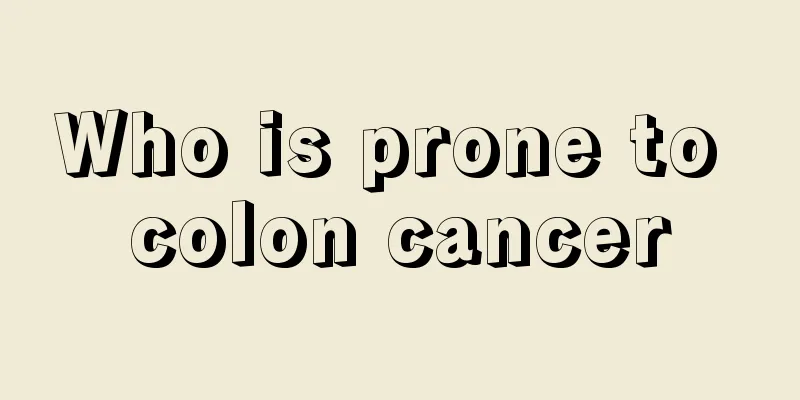What to do if you have an allergic reaction to an IV drip

|
For some people with allergic constitutions, infusion allergy is a very common phenomenon. If infusion allergy occurs and is not treated in time, it may even cause symptoms of shock, posing a great threat to human health and even life safety. Therefore, when symptoms of anaphylactic shock occur during infusion, first aid must be performed in the correct manner. Below I will introduce you to the relevant knowledge. 1. Symptoms of infusion allergy According to the requirements of the National Health and Family Planning Commission, all outpatient clinics in tertiary hospitals have stopped intravenous infusion, and patients can only receive intravenous infusion in the emergency room or be hospitalized. Some patients who need intravenous infusion go to other medical institutions for infusion because they are afraid of trouble. There are great potential risks in giving intravenous drips in medical institutions that do not have the conditions for emergency rescue, and you should be careful to prevent anaphylactic shock during the infusion. Anaphylactic shock is a type I hypersensitivity reaction that develops and develops rapidly, often without any warning signs. Its main pathological changes are systemic vasodilation, increased permeability, and smooth muscle spasm, leading to laryngeal edema, bronchospasm, and pulmonary edema. Common symptoms include chest tightness and shortness of breath, pale complexion, difficulty breathing, cold sweats, cold limbs, and fainting. Death is possible if rescue is not timely. Anaphylactic shock is common in intravenous use of drugs, especially penicillin and cephalosporin antibiotics, and may occur even in those with negative skin tests or those who have had normal medication results before. 2. Rescue of anaphylactic shock 1. Immediately stop suspicious intravenous medication and change the intravenous strap. Be careful not to remove the intravenous needle. 2. Immediately inject epinephrine intramuscularly, 0.3-05ml of 1:1000 epinephrine (1ml per vial, equivalent to 1/3-1/2 vial), rather than intravenously, because intramuscular injection is absorbed the fastest. 3. Anti-allergic treatment: dexamethasone 10 mg intravenous injection. 4. Maintain blood pressure. Depending on the shock and individual condition, give rapid infusion and, if necessary, use dopamine to maintain blood pressure at least 90/60 mmHg. 3. What should I do if I have skin allergy after infusion? 1 Generally, some people will develop red patches or rashes on their skin after suffering from drug allergies. In this case, they should stop taking the medication immediately, go to the hospital for some relevant examinations in time, and then actively receive treatment based on the results of the examination. 2 Nowadays, many people, when they suffer from certain diseases, think that the effect of taking medicine is very slow, so they choose intravenous drips. However, intravenous drips can easily cause allergies. After the allergy, you must tell the doctor and deal with it in time. 3 After drug allergy occurs, it can be mild or severe. Under normal circumstances, if the situation is not serious, the situation will improve after taking medication for a period of time. However, if the situation is serious, timely treatment is required according to the patient's specific situation. |
<<: What do you put in the IV drip for heat stroke
>>: Main varieties of wine grapes
Recommend
How to treat glioma
Glioma is a brain tumor disease. There are no sym...
Autumn and winter health drinks
The weather is unusually dry in autumn and winter...
A series of methods for caring for patients with colorectal cancer are introduced in detail
Colorectal cancer is a very common tumor disease,...
Do I need targeted therapy after lung cancer surgery?
Early stage lung cancer does not require targeted...
Symptoms and characteristics of gallbladder cancer at different stages
In the early stages of gallbladder cancer, patien...
Do figs make you fat? How to eat figs
Figs are a favorite snack for many people, especi...
What are the sequelae of pancreatic cancer surgery
In cancer treatment, no matter what kind of cance...
What is the cause of back obesity
If a girl has a hunchback and thick shoulders, sh...
There are vertical lines on the nails. This will heal them quickly
Many people have vertical lines on their nails in...
The difference between primary liver cancer and secondary liver cancer
Primary liver cancer originates from the liver it...
Can patients with nasopharyngeal cancer drink alcohol?
Can patients with nasopharyngeal cancer drink alc...
What to do if one upper eyelid droops
Generally speaking, as people age, their eyelids ...
What foods to eat if you are calcium deficient
In addition to the secondary physical characteris...
What to eat after bladder cancer surgery
What foods are good for bladder cancer after surg...
What are some tips for curing rhinitis
The thing that bothers us most is rhinitis, becau...









